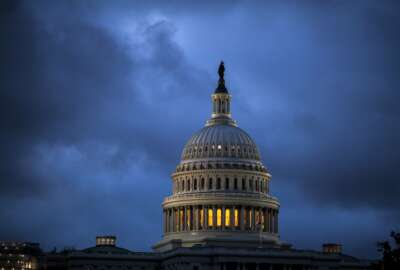Ninety percent of the federal workforce will be hit hard if the on-again-off-again GOP plan to trim contributions to 401(k) plans becomes law. The plan, which President Donald Trump first endorsed, then denounced in a tweet, would reduce the amount of pre-tax money that people can put into a 401(k) plan. Over a long career, the diminished contributions could drastically reduce the standard of living people have in retirement.
Federal and postal workers are among the biggest fans of the optional 401(k) plan offered by many employers. The government program — the Thrift Savings Plan — is extremely popular with workers. As of September, 89.9 percent of all FERS employees (the majority of the federal workforce) were participating in the TSP. FERS employees who contribute at least 5 percent to the TSP are eligible for a 5 percent match from Uncle Sam.
The minority of workers who are under the old CSRS plan get a more generous annuity than FERS retirees, but do not qualify for any agency match. About 73 percent of all CSRS employees are participating in the TSP, as are 48.3 percent of members of the uniformed services.
Because the TSP is portable, workers and members of the military who leave federal service can take the money with them to beef up their retirement nest egg in another job.
Thanks to constant, sustained investing, the TSP now has 16,475 self-made millionaires. The vast majority are career civil servants who have been investing in its stock-indexed funds for an average of 28 years. That is a very big deal. In January 2016, there were “only” 3,272 TSP millionaires, and 18,846 had account balances between $750,000 and $999,000. But the number of on-the-cusp-millionaires had jumped to 46,088 as of Aug. 15, 2017.
Two bottom lines: One is that feds know a good thing when they see it. The majority are putting a good sized portion of their current income into their supplemental retirement savings. The average TSP account balance is just over $133,000, which is higher (by about $30,000) than the average private-sector account.
Secondly, as Congress and the White House take aim at the federal retirement program (one proposal would eliminate the FERS defined benefit pension entirely) the amount of money that workers can sock away for retirement is more important than ever before.
When the FERS program was created (to replace CSRS), the Congressional Research Service estimated that contributions/earnings from TSP accounts would provide between one-third and one-half of their post-retirement income. That’s 30-to-50 cents of every dollar you will have to spend in retirement. Either way, that’s a lot.
If the FERS program is dinged by our majority-millionaire Congress (or if employee contributions are raised anywhere from 4.4 percent to 6 percent), that will cut into take-home pay as long as they are working and produce reduced pensions when they retire.
If the amount of money that workers — federal and private sector — can contribute to a 401(k)-type account is reduced, the so-called golden years could start showing rust spots right after retirement.
Nearly Useless Factoid
By David Thornton
There are a total of 6,670,903,752,021,072,936,960 possible Sudoku solutions. However, after removing rotations, reflections, permutations and relabeling, in other words, the same puzzle in a different form, the number of solutions is 5,472,730,538.
Source: Wikepdia
Copyright
© 2024 Federal News Network. All rights reserved. This website is not intended for users located within the European Economic Area.
